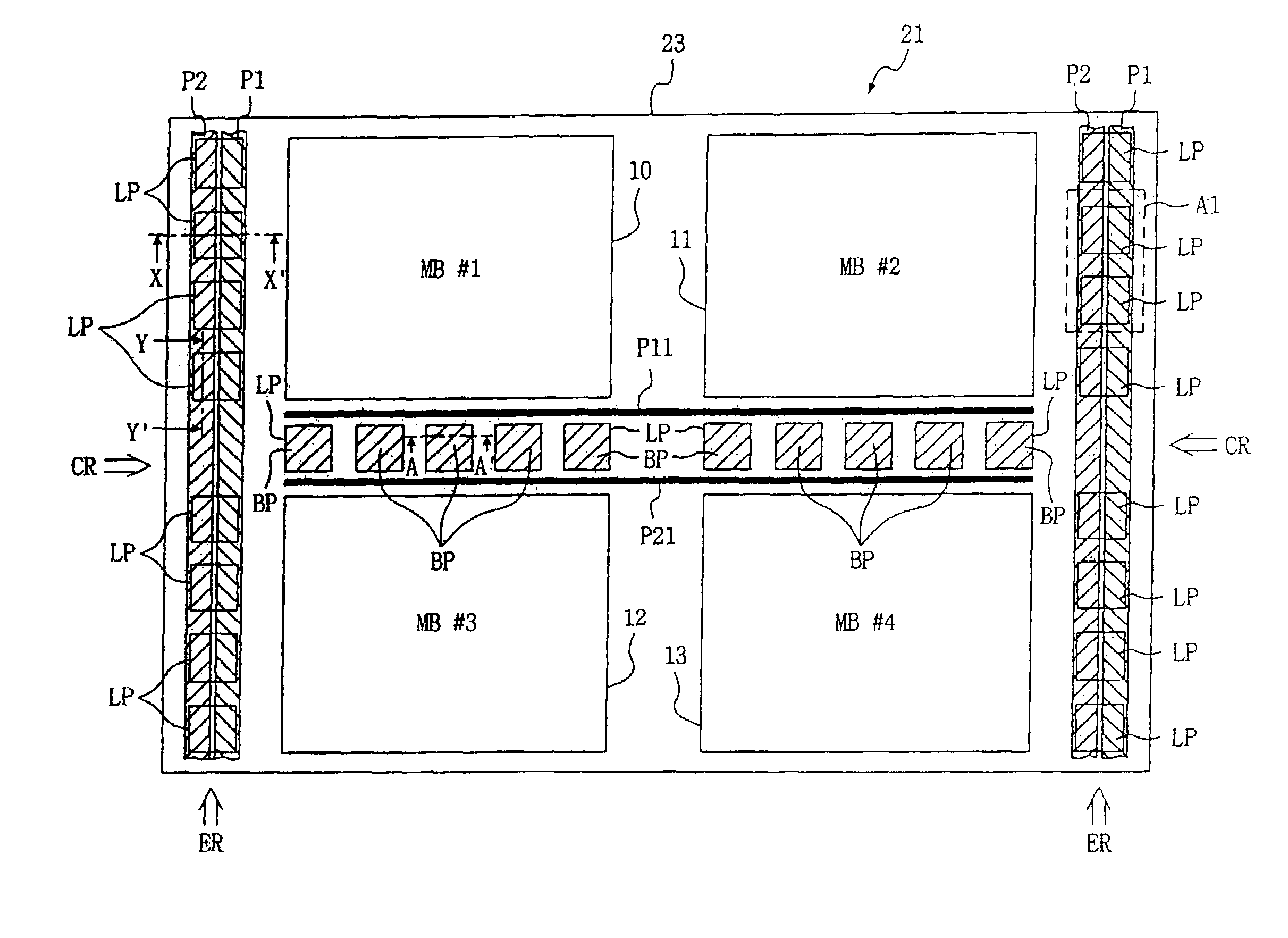Apparatus and method for signal bus line layout in semiconductor device
a technology of signal bus and layout approach, which is applied in the direction of electrical apparatus, semiconductor devices, semiconductor/solid-state device details, etc., can solve the problems of circuit power noise problems and power noise that is particularly high in certain regions of the device, and achieve the effect of eliminating the power noise drawbacks of the prior approach
- Summary
- Abstract
- Description
- Claims
- Application Information
AI Technical Summary
Benefits of technology
Problems solved by technology
Method used
Image
Examples
Embodiment Construction
[0048]FIG. 1 is a schematic diagram illustrating a layout of bonding pads and power supply bus lines in a conventional semiconductor memory device. The device 2 includes a plurality of memory blocks 10, 11, 12 and 13 on a substrate 20. A center region CR is defined between the memory blocks as shown, and edge regions ER are defined between the memory blocks and the edges of the substrate 20. A plurality of bonding pads BP are formed in both the edge regions ER and the center region CR as shown. In each of the regions, a pair of power supply bus lines is also formed. Specifically, in the edge regions ER, power supply bus lines P1 and P2 are formed on opposite sides of the bonding pads BP, and power supply bus lines P11 and P21 are formed in the center region on opposite sides of the bonding pads BP.
[0049]The device in FIG. 1 is fabricated to accommodate both a center pad configuration and an edge pad configuration. Accordingly, bonding pads BP as well as power supply lines P1, P2, P1...
PUM
 Login to View More
Login to View More Abstract
Description
Claims
Application Information
 Login to View More
Login to View More - R&D
- Intellectual Property
- Life Sciences
- Materials
- Tech Scout
- Unparalleled Data Quality
- Higher Quality Content
- 60% Fewer Hallucinations
Browse by: Latest US Patents, China's latest patents, Technical Efficacy Thesaurus, Application Domain, Technology Topic, Popular Technical Reports.
© 2025 PatSnap. All rights reserved.Legal|Privacy policy|Modern Slavery Act Transparency Statement|Sitemap|About US| Contact US: help@patsnap.com



